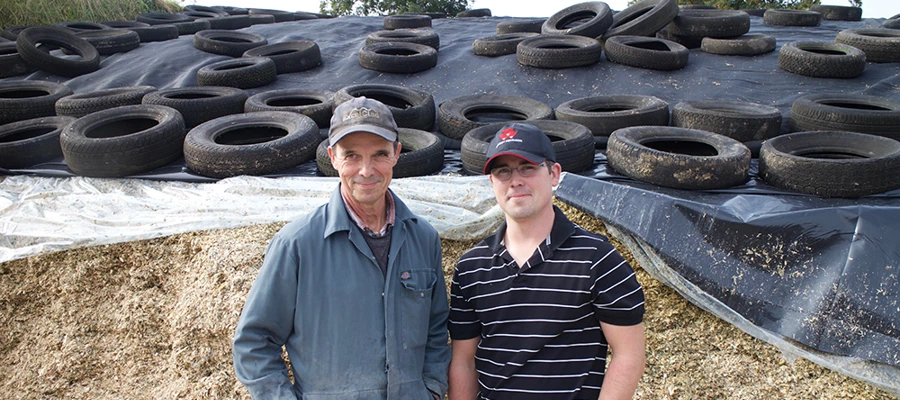Actisaf® improves forage utilisation from silage and grazing
The cows have always been good forage eaters at Brook House Farm near Whitchurch in Shropshire and when a problem arose with silage quality, introducing Actisaf® Sc 47 live yeast had a significant affect on cow performance across both silage and grazed grass.


Paul Bradbury farms in partnership with his wife Dee and son David, milking 120 all year round calving Holstein Friesian cows, with an average yield of 8,500 litres.
“Our aim is to drive our system on quality forage,” explains Paul. “We graze where ever possible and have invested in a tracks to help increase grass utilisation. It’s cheaper than silage and we know from analysis it’s a high quality feed, I think partially because of our reseeding policy. But quality can be inconsistent across the season and, depending on the weather, even from day to day.
“We’ve also put emphasis on producing the highest possible quality silage here, regularly reseeding and analysing silage to help us address problem areas. Last winter we noticed that the cows just weren’t performing in the same way and I knew there were issues with the grass silage. Their dung was loose and fizzy and they just looked uncomfortable. You could tell that rumen health had become an issue.”
Helping cows manage the challenges of both changing diets when they move from silage to grass and inconsistencies within that diet is the reason Philip Jackson from HJ Lea Oakes suggested Paul include Actisaf® live yeast in the cows’ blend.
“The Actisaf® live yeast works in a number of ways,” explains Philip. “It removes oxygen from the rumen and stabilises the bug population during those periods of diet change or nutritional inconsistencies that are so prevalent when cows are grazing.
“It also promotes the right kind of bacteria in the rumen, the fibre digesters and the lactate utilising ones, which stabilises the rumen pH. All of this leads to a more consistent rumen environment, ready to make the best use of the grazed grass, forages and concentrates in the diet.”
Paul continued with the Actisaf® in the diet when the cows went out to grass to help manage that change in the diet and inconsistencies in energy, protein and dry matters.
“The cows are performing well on the yeast,” says Paul. “We’re not feeding them any more forage than we used to but they just seem to be able to make better use of it. Milk from forage figures have risen to 4,291 litres and you can tell from the way the cows behave that rumen health is good.”
